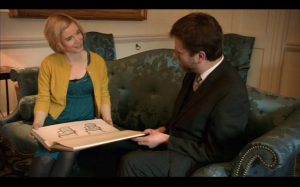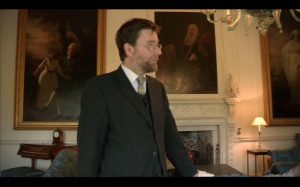
An interview with leading furniture historian David Jones of St Andrews University, who has been delivering keynote lectures on the Life and Times of Thomas Chippendale at the Chippendale International School of Furniture for more than 12 years.
“Students at the Chippendale International School of Furniture learn about different furniture making styles, and how to take the best ideas from the past and adapt them to modern needs. Diversity and practicality are key features of the furniture design course,” says David Jones.
With a focus on Thomas Chippendale, David Jones’ furniture history talks also include a lecture on modern furniture from the 1950’s up to the present day. This takes in ‘experimental modernism’ in Italy (Fornasetti), American furniture makers (Charles and Ray Eames) and concludes with leading contemporary furniture designers like Angus Ross, based in Aberfeldy in Scotland.
“It’s the highlight of my year because everyone at the School is so eager to learn. Anselm creates a great atmosphere and there’s always lots of jollity,” says David Jones.
He explains that Thomas Chippendale had strong connections with Scotland which are still evident today. That’s why you can see some of his best commissions at Blair Castle north of Perth, at Dumfries House in south west Scotland, and at Paxton House near Berwick. See more of Dumfries House and Thomas Chippendale in this video.
Students from the Chippendale School of Furniture have opportunities to see Thomas Chippendale’s furniture first hand on inspiring field trips to many of these houses.
David Jones gives some background on Thomas Chippendale:
“He was born into a family of cabinetmakers and woodworkers in the town of Otley in Yorkshire. Thomas Chippendale’s fame spread when he published ‘The Gentleman and Cabinet-Maker’s Director’ in 1754, his pioneering pattern book of furniture designs.
“His talents for cabinet making were spotted by wealthy Scotsmen, James Rannie, a shipping investor from Edinburgh, and some founders of the Royal and Ancient Golf Club in St Andrews. They helped set up the young craftsman in a three storey workshop in London’s St Martin’s Lane. The area had a thriving artistic and design community where the Rococo style flourished, and was close to St Martin’s Academy founded by William Hogarth.
“Within Chippendale’s ‘Cabinet and Upholstery Warehouse’, there were workshops for cabinet makers, upholsterers and glass workers; feather and carpet rooms; workshops for veneers and forgers; as well as stores and drying rooms. About forty craftsmen worked there.
“In the ‘Director’, Thomas Chippendale tamed the ornate Rococo style which came from France in the 1730s. With its wildly curvaceous virtuoso carving, Rococo was difficult to recreate. Chippendale created simplified designs that ‘could be made by any capable workman’, making stylish furniture accessible to a new class of people.
“Thomas Chippendale fed the hunger for modernisation in Scotland after the Jacobite uprising in 1745. This was a period of stability in Scotland that led up to the Scottish Enlightenment. Encouraged by greater prosperity, the Scots concentrated on trading and building new houses. From 1754 to 1790, the manufacturing of Chippendale furniture was part of this rebuilding and cultural awakening, and his furniture was used to furnish many of the most stylish houses.”

David Jones became interested in furniture as a child, inspired by relatives in Wales who had a home full of enchanting furniture. He worked at Temple Newsam House outside Leeds in the north of England with its significant collection of Chippendale furniture.
David went on to study history and history of art at university, then worked in museums where, following his passion, he grasped the chance to look after their furniture collections. David’s opportunity to teach furniture history came up during the 1980’s when he proposed the creation of a new course on the history of furniture at St Andrews University. The rest, as they say, is history.
To learn more about Thomas Chippendale, you can watch a video of David Jones being interviewed in Dumfries House by historian Dr Lucy Worsley on BBC2’s Antiques Uncovered. David introduces one of the finest collections of Thomas Chippendale’s furniture and Anselm Fraser demonstrates how to make the legs of a Chippendale chair at the Furniture School. (David stars between 2 and 5 minutes from the start of the video. The interview with Anselm Fraser at the School follows from 5 to 9 minutes from the start). We are grateful to Silver River Productions for allowing us to show this video. Check out the Chippendale School of Furniture YouTube Channel for this and other videos about the Furniture School.